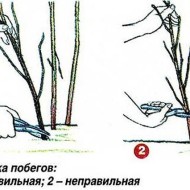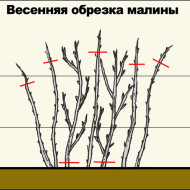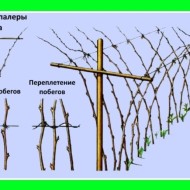Planting and growing large-fruited fragrant raspberries of the Yellow Giant variety
Content
History and zoning of the variety
Raspberry Yellow Giant is one of the achievements of Victor Kichina, Doctor of Biological Sciences. In 1979, a new variety of yellow raspberries was bred by the method of cloning in laboratory conditions of varieties Maroseyka and Ivanovskaya. For 12 years, varietal trials of the fruit and berry culture bred by the cloning method lasted. And only in 1991, the Yellow Giant variety was recommended for further cultivation by gardeners.
In 2008, the Yellow Giant variety was patented and entered into the State Register of Breeding Achievements of the Russian Federation. Fruit and berry culture is recommended for cultivation in the North-West region.
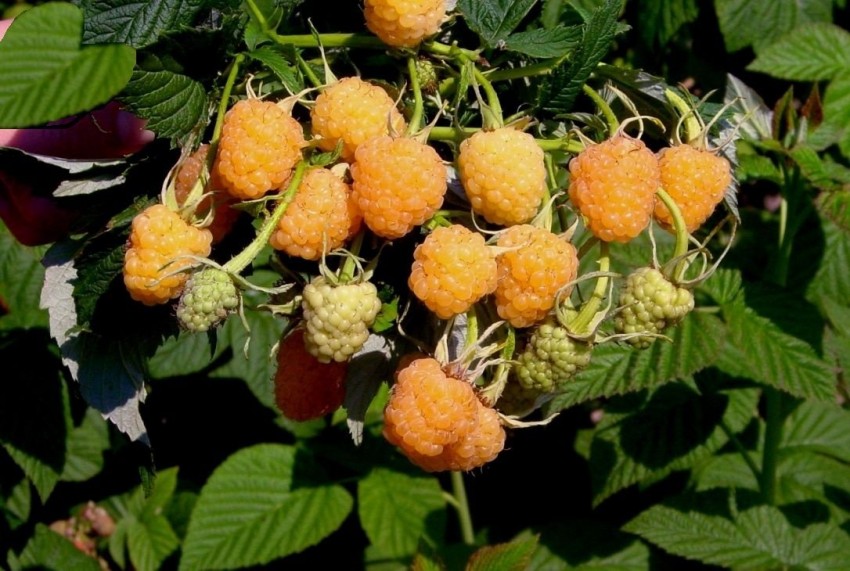
Description of the remontant variety
Raspberry Yellow giant belongs to the group of remontant varieties. Fruits are formed on annual and biennial shoots.
Ornamental qualities of the bush
Refers to medium-sized fruit and berry crops. The average height of the shrub is 2 m. The shoots are powerful and resilient, there is slight pubescence. As it grows, the color of the bark changes from dirty brown to dark gray.
Bushes are erect, slightly spreading. There are few sharp thorns on the branches. The leaves are large, wrinkled, rich green color.
Characteristics of berries
The main advantage of the Yellow Giant raspberry is the large juicy berries of a yellow-honey color. The average weight of the fruit that has reached technical maturity is 8 g. Under favorable weather conditions, the elongated-conical berries can reach 11–13 g in weight.
The yellow giant is prized for its taste. The berries are aromatic, sweet, juicy and delicate in taste. They have a complex and unpleasant aftertaste. They contain a large amount of vitamin B9 and folic acid.

Productivity and application
The yellow giant is a dessert variety. Ripe berries are consumed fresh or processed for the production of juices, compotes, syrups, jams and jellies.
The yield of the variety is at a height: at least 3-4 kg of ripe and aromatic fruits are harvested from one adult bush.
The pros and cons of the Yellow Giant
Yellow raspberries are not popular among gardeners. However, after studying the advantages and disadvantages of the Yellow Giant variety, many of them radically change their minds.
- early maturity;
- consistently high yield;
- resistance to most fungal diseases;
- high winter hardiness;
- amazing commercial and taste qualities of fruits;
- universal application;
- lack of an allergic reaction when eating berries.
- low transportability;
- short lying down;
- the tendency of the shrub to form dense growth.
Video "Description of the Raspberry Yellow Giant"
This video presents the key characteristics of the yellow-fruited variety.
Rules for planting and growing raspberries
Yield indicators and taste characteristics of crops grown in the garden and in the beds depend on adherence to planting and care technologies.
Site selection and soil preparation
Since the early growing season is characteristic of the yellow raspberry Yellow Giant, it is not always possible to find the right time for the spring planting of the seedling in open ground. The best option is planting in the fall.
The variety loves an area open to the sun, but is afraid of an abundance of moisture and draft. It is better to plant varietal seedlings near fences and other fences. The yellow giant grows well and bears fruit actively, provided it grows in a light and nutritious substrate. Sandy loam or loamy soil is suitable for planting a seedling. The soil is pre-dug up and fertilized. For 1 m², 60 g of superphosphate and 25 kg of rotted manure are required.
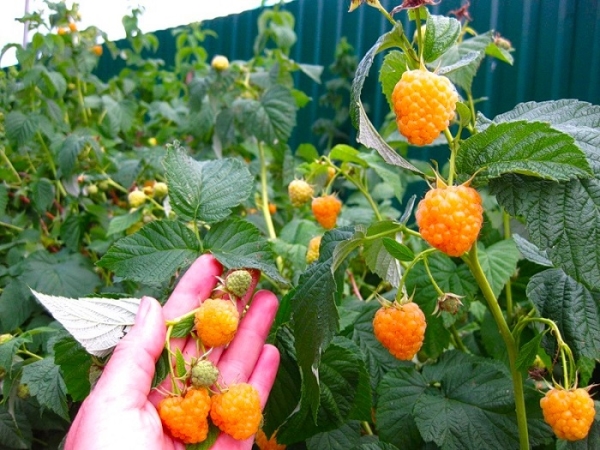
Reproduction methods
Raspberry Yellow giant is prone to the formation of numerous root shoots, which can be used to obtain quality planting material. This variety is not recommended to be propagated by seeds, layering or dividing the bush. There is a high probability of loss of basic varietal characteristics.
To plant the Yellow Giant raspberry, the European trench method is used, the description and diagram of which are shown in the figure below.

Moisture and nutrient requirements
Fruit crops love abundant watering, but don't overdo it. Excess moisture leads to rotting of the root system. If the raspberry bush starts to rot, it will be very difficult to save it. During the growing season, 3 to 5 waterings are required. 3-5 buckets of settled water at room temperature are poured under one bush. After 1–2 days, the soil is loosened.
The first three years after planting in a permanent place of growth, the shrub does not need to be fed. In the future, every spring, the plant is fertilized with nitrogen-containing preparations. During fruiting, fertilizing is carried out with potassium sulfate and charcoal. For 1 m² you need 200 g of charcoal and 80 g of potassium sulfate.
Pruning and garter
A distinctive feature of the variety is its seasonal development. For this reason, many gardeners use a radical method of pruning shrubs, removing shoots as close to the ground as possible. Such pruning is carried out 20-25 days before the expected frost.
In addition to radical pruning, the fruit crop must be thinned periodically. When the shoots are 35–40 cm long, it is time to remove the weak, slow-growing and poorly developing branches. Long branches are tied to trellises to prevent them from sagging.
- Autumn root pruning
- Spring pruning
- Garter of raspberry shoots
Correct wintering
Raspberries cut to the root do not require additional shelter for the winter. Otherwise, the shoots of the fruit crop are removed from the trellises, bent to the ground, fixed with wire or staples and sprinkled with dry foliage. Branches bent to the ground are covered with burlap or agrofibre.
Don't rush to shelter raspberries for the winter. Covering the plant too early increases the risk of root collar burning. You need to be guided by the weather and forecasts of specialists from meteorological stations.
Prevention of diseases and pests
Yellow raspberries are highly immune to most fungal diseases. It is extremely rare that the Yellow Giant variety can be affected by root rot, purple spot and anthracosis.Preventive treatment of the shrub with 3% Bordeaux liquid will help prevent the development of the fungus. In case of abundant damage to the culture, fungicides "Fitosporin", "Topaz", "Kuprozan" and "Abiga-Peak" are used.
The main pests of the variety are raspberry kidney moth, raspberry aphid and strawberry-raspberry weevil. Damage by harmful insects leads to loss of yield. Experienced gardeners suggest the following insect control scheme.

Gardeners reviews
“In our family there is a child with allergies who is very fond of juicy raspberries. The problem was solved by planting the yellow-fruited variety Yellow Giant on the site. I also want to note that there are no difficulties with growing a plant. "
“The Yellow Giant managed to achieve active fruiting and high yields of raspberries after replanting the shrub on a hill. The abundance of the sun and the absence of excess moisture in the soil had a beneficial effect on the vitality of the culture. "
With proper cultivation, the Yellow Giant raspberry variety will not only delight you with a generous harvest, but also become a real decoration of the garden. Ripe golden berries stand out favorably against the background of other fruit and berry crops.

